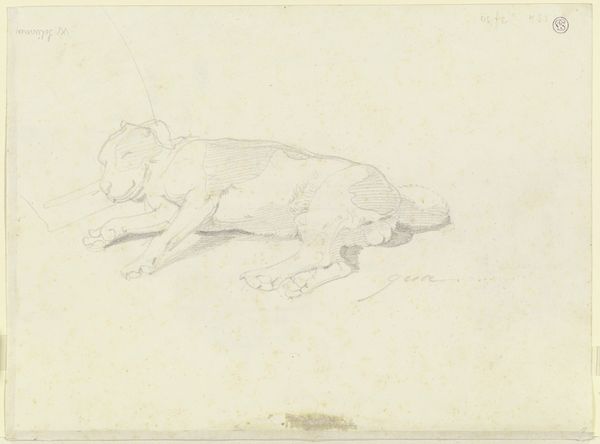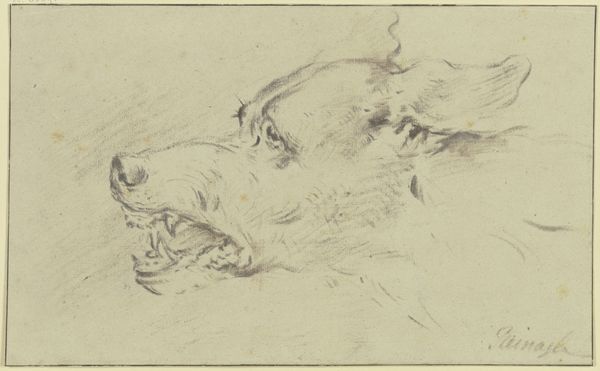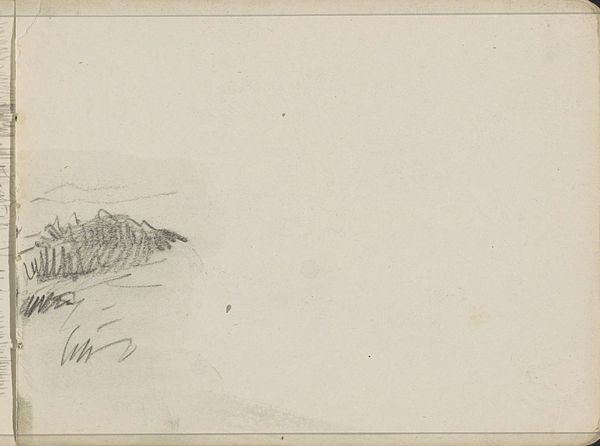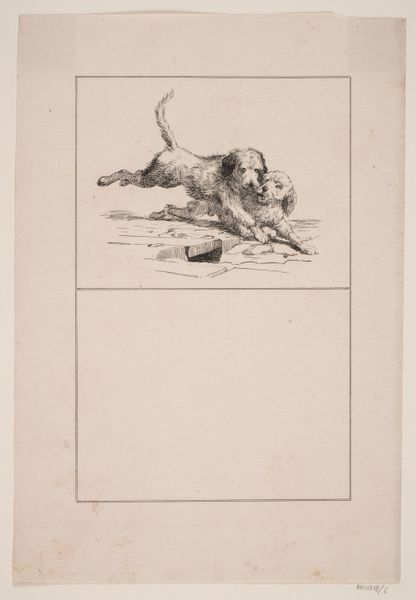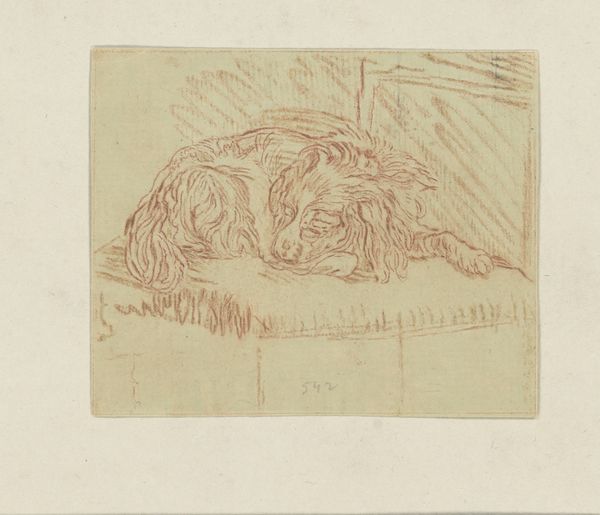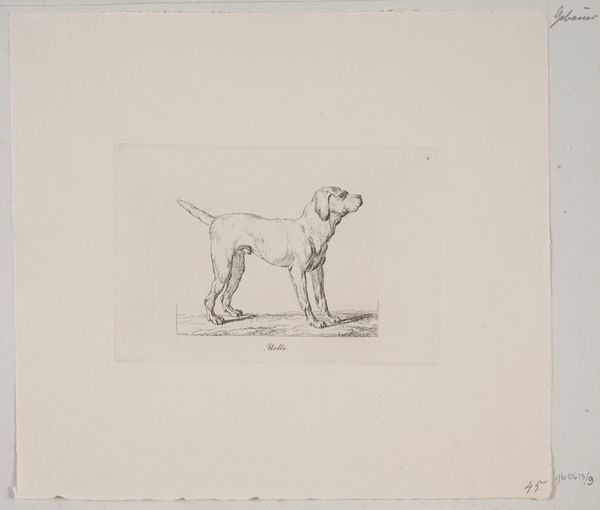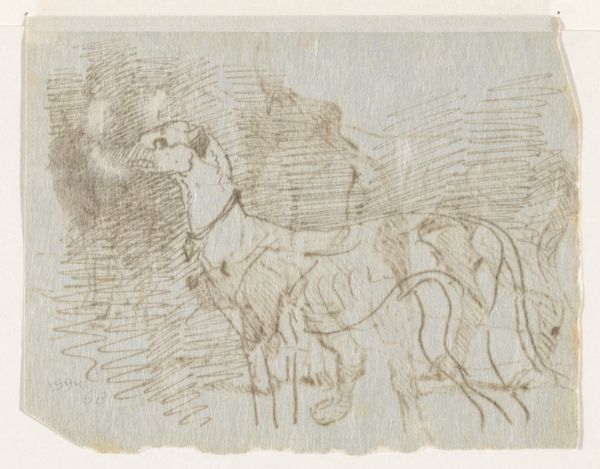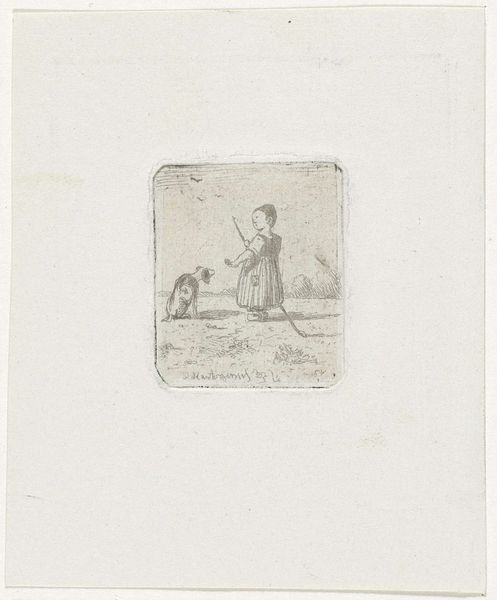
drawing, pencil
#
portrait
#
drawing
#
dutch-golden-age
#
pencil sketch
#
dog
#
pencil
Dimensions: height 114 mm, width 149 mm
Copyright: Rijks Museum: Open Domain
Curator: This is “Head of a Dog,” a pencil drawing created sometime between 1630 and 1700 by an anonymous artist of the Dutch Golden Age, now residing here at the Rijksmuseum. Editor: My immediate thought is how isolated the animal appears. The vast blank space dominates, giving it a slightly melancholy air, doesn't it? Almost like an afterthought hastily placed into an empty world. Curator: I see that negative space as evocative, certainly, but also highlighting the emerging Dutch interest in depicting the domestic sphere. Notice the delicate lines; it almost feels like an intimate observation. Editor: Domestic, yes, but I wonder what the socio-economic reality of pet ownership was like during this period? This drawing speaks to more than just affection; perhaps also wealth, privilege, and control over the natural world. Curator: Indeed, such portraits cemented societal status, mirroring how we use pet photos even today. But there’s also something universal in the posture, the subtle tilt of the head that captures a dog’s inquisitive nature. Editor: I suppose it humanizes both the animal and us, projecting our desires onto this very fuzzy canvas. This image exists now within a tradition of portraying pets as extensions of ourselves and I would find the cultural shift of these practices valuable in our consideration of its impact. Curator: I can only wonder what our understanding will look like 400 years from now when viewing similar artifacts of modern affection, that were produced from pencil sketches. Editor: Precisely. It’s an invitation to explore those parallels and interrogate the assumptions we make when observing art across time, through varied cultures, while also holding our experiences. Thank you.
Comments
No comments
Be the first to comment and join the conversation on the ultimate creative platform.

